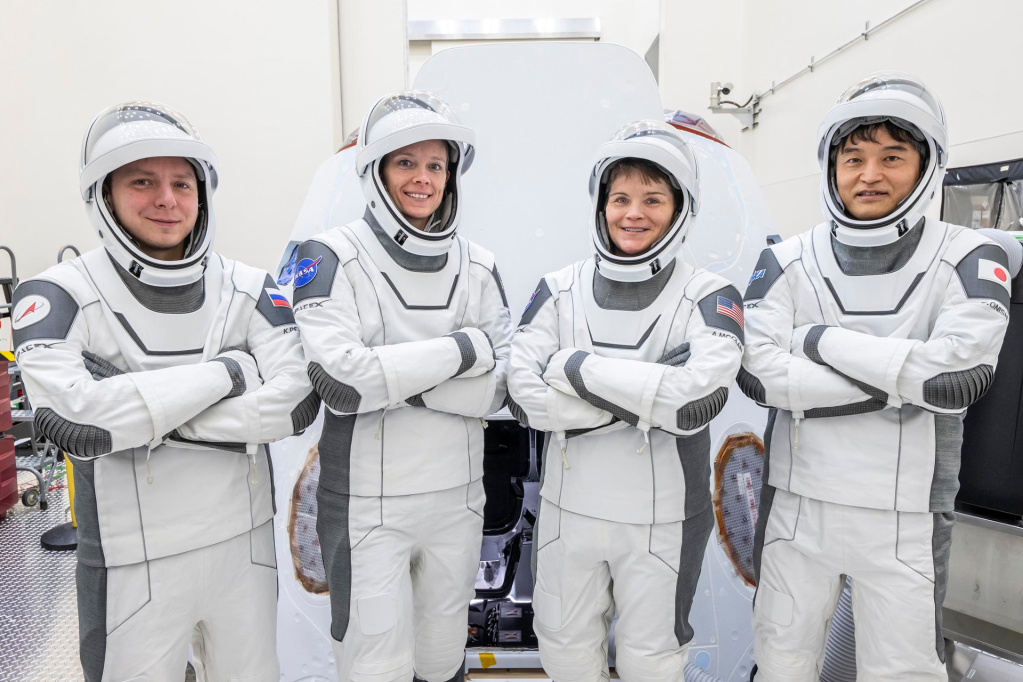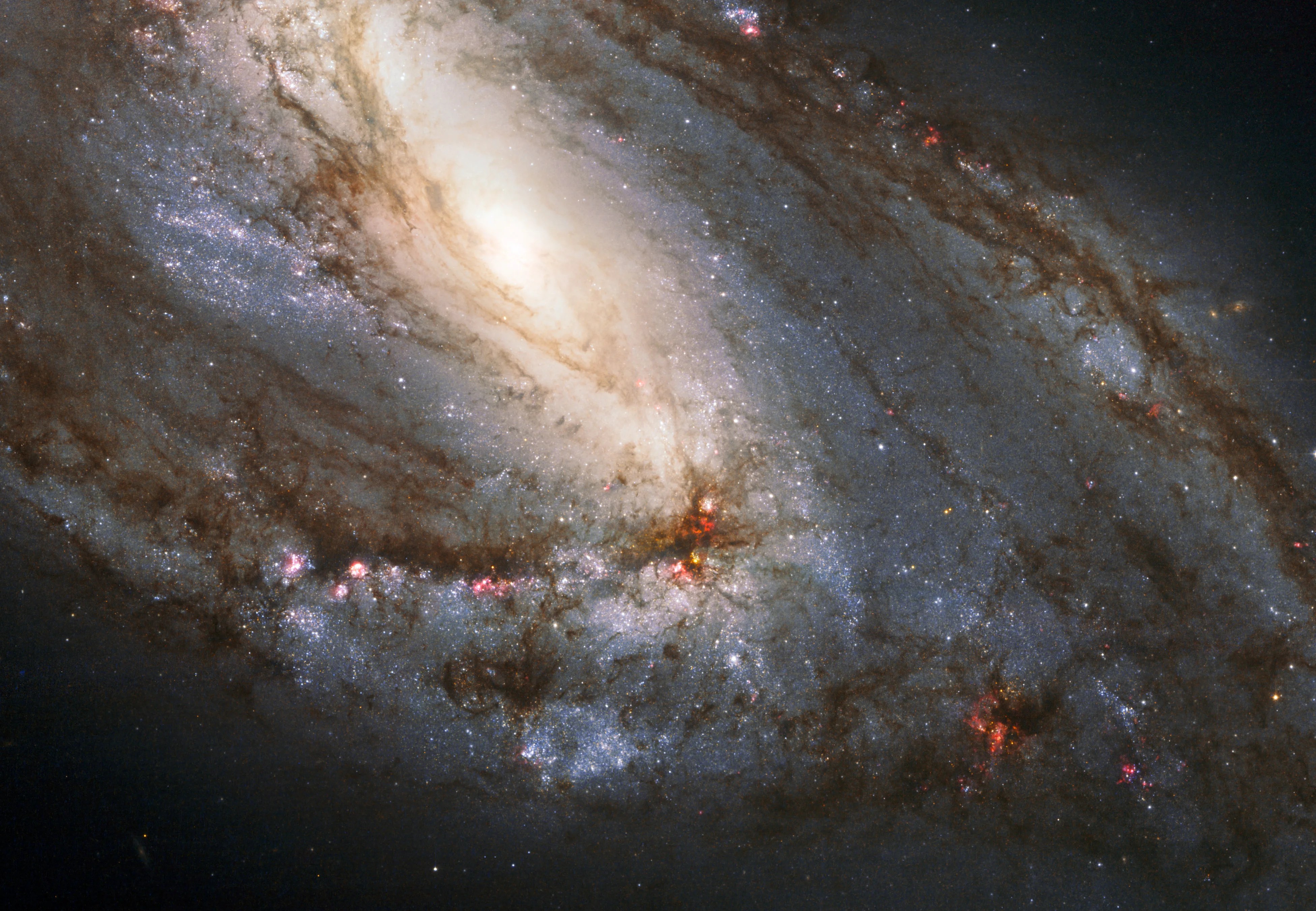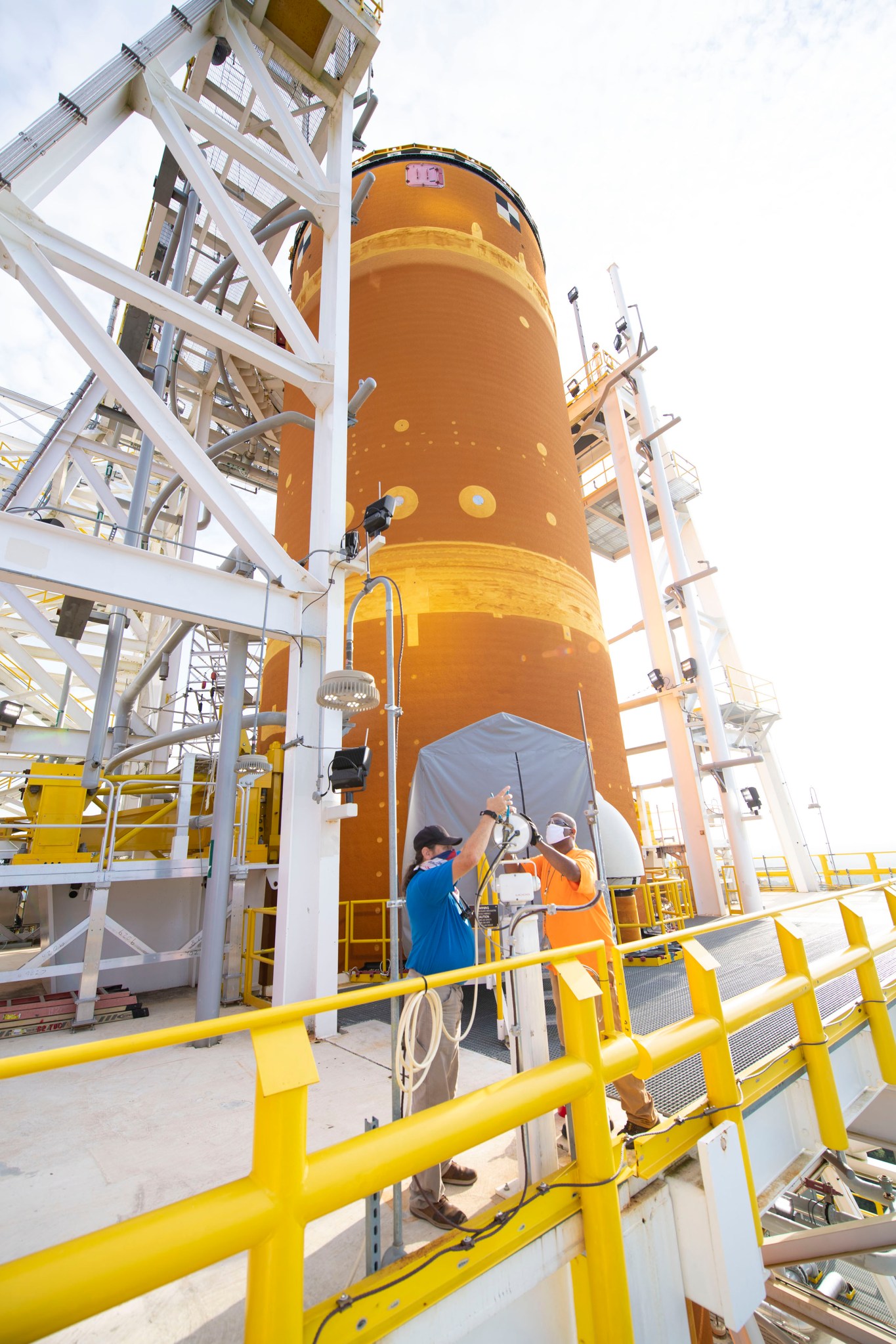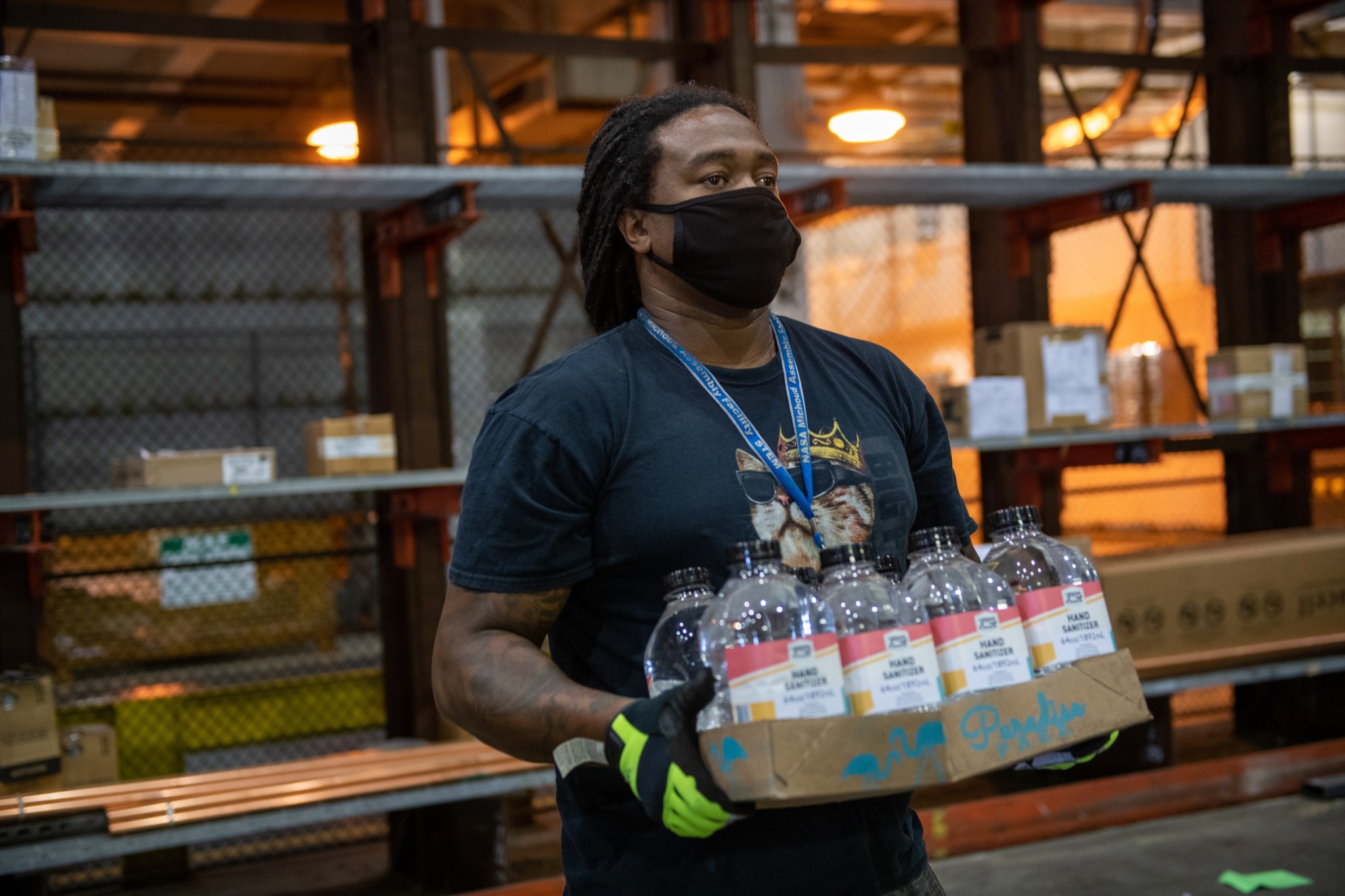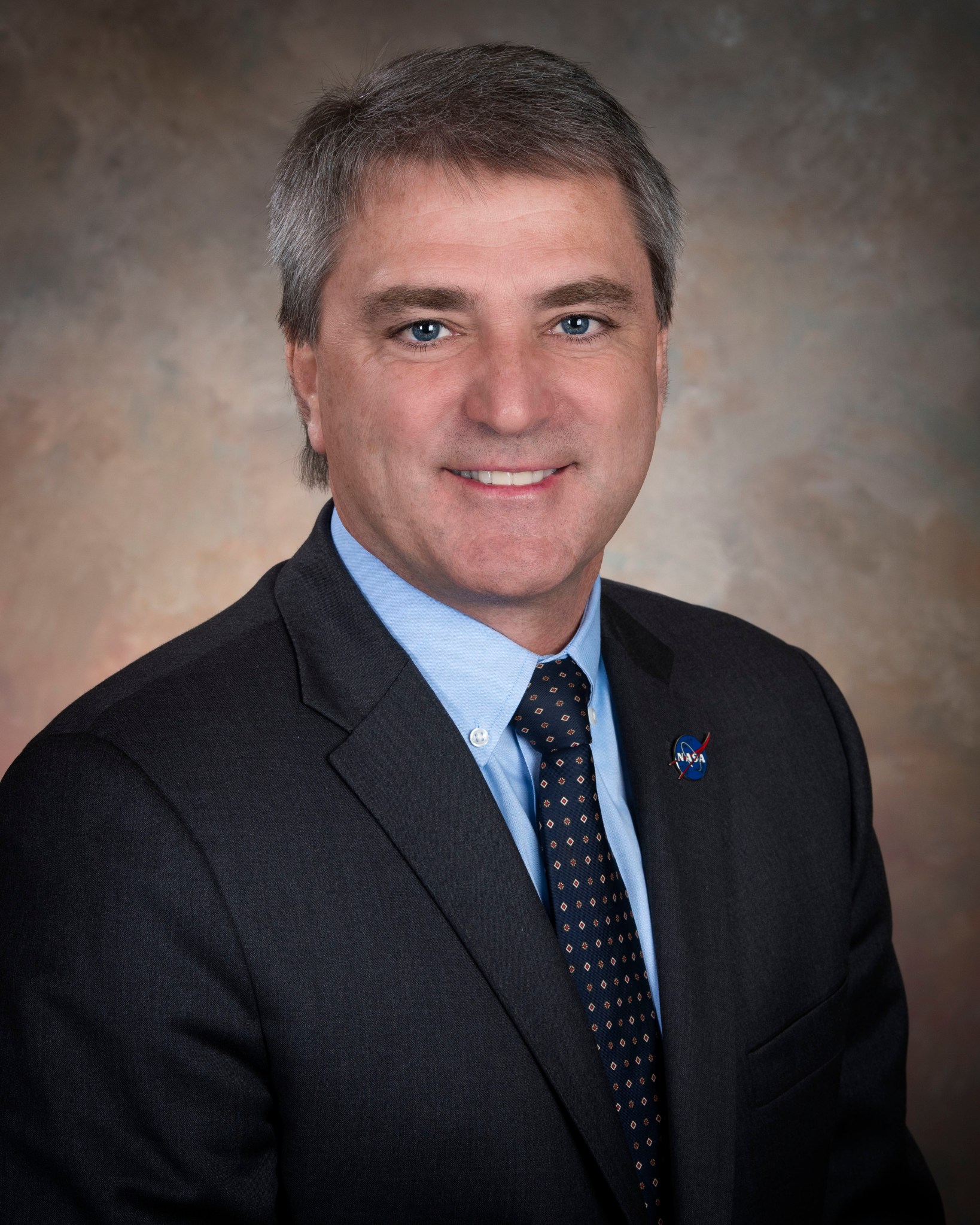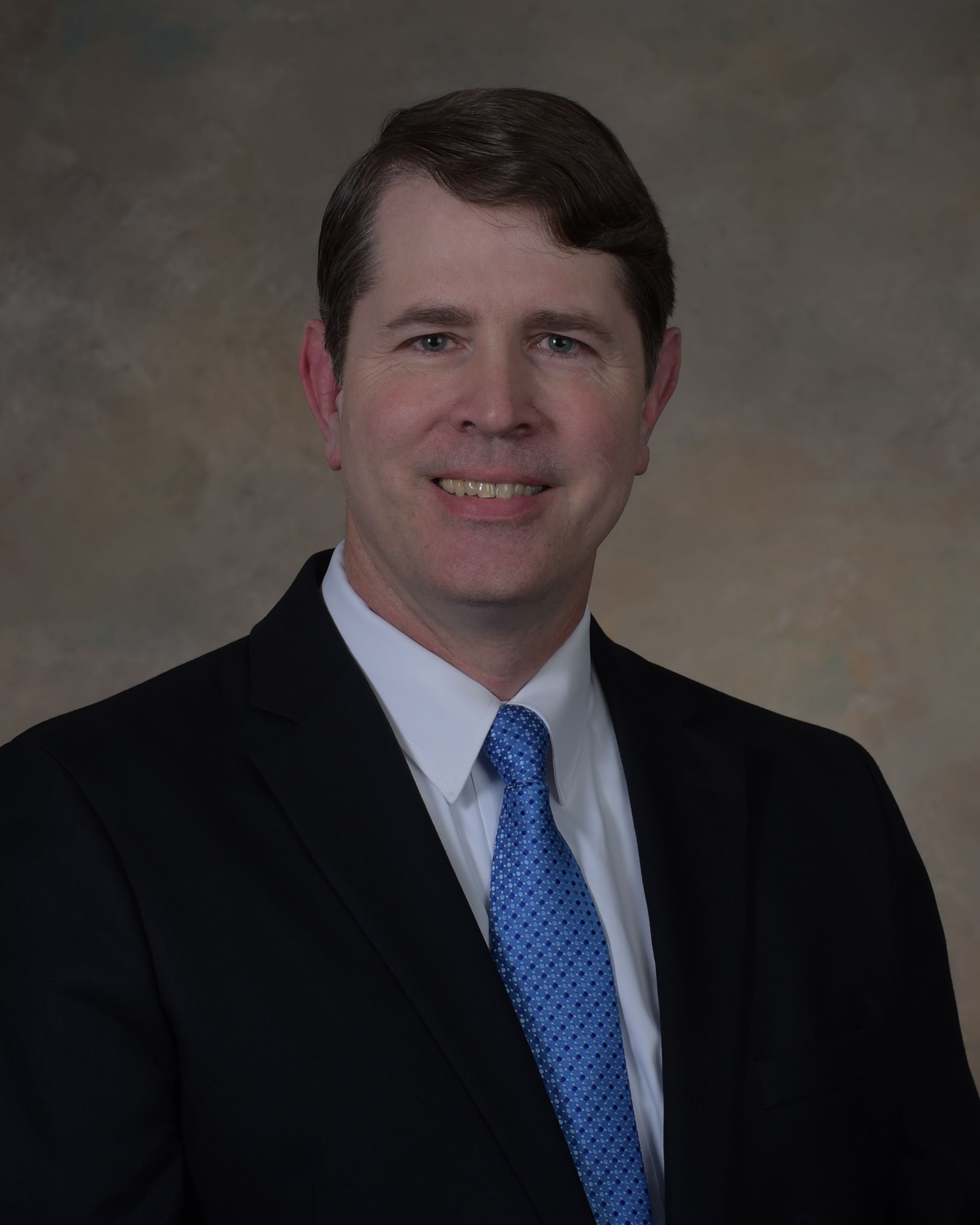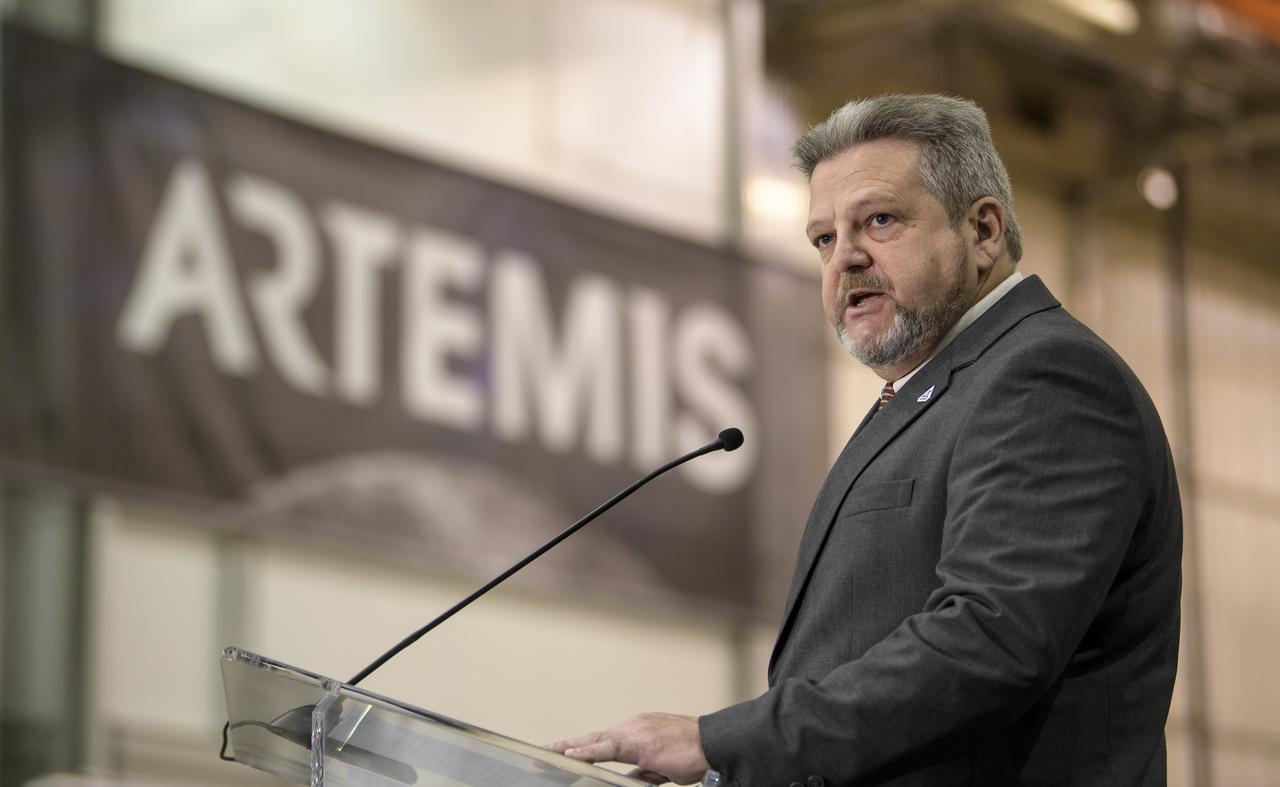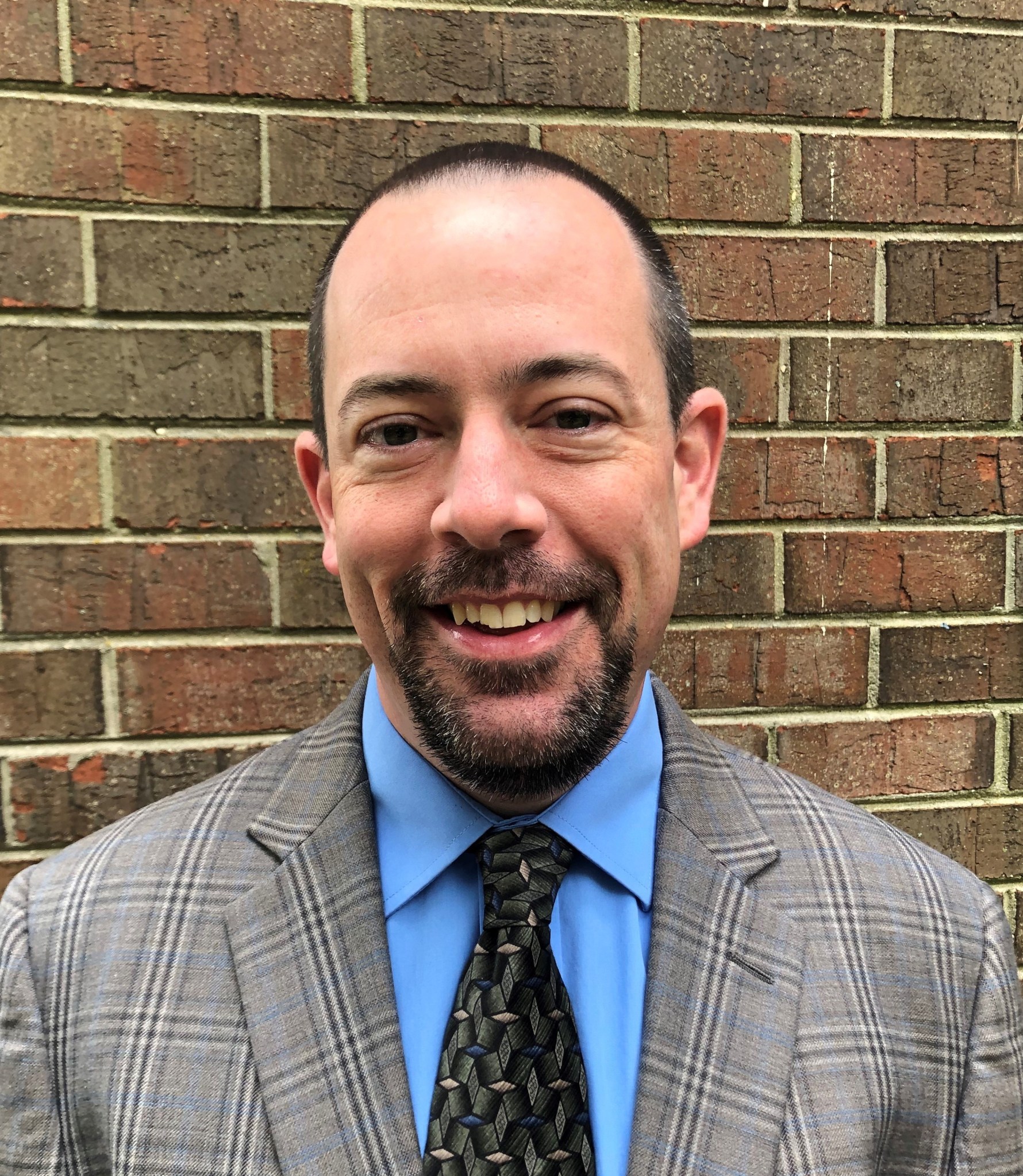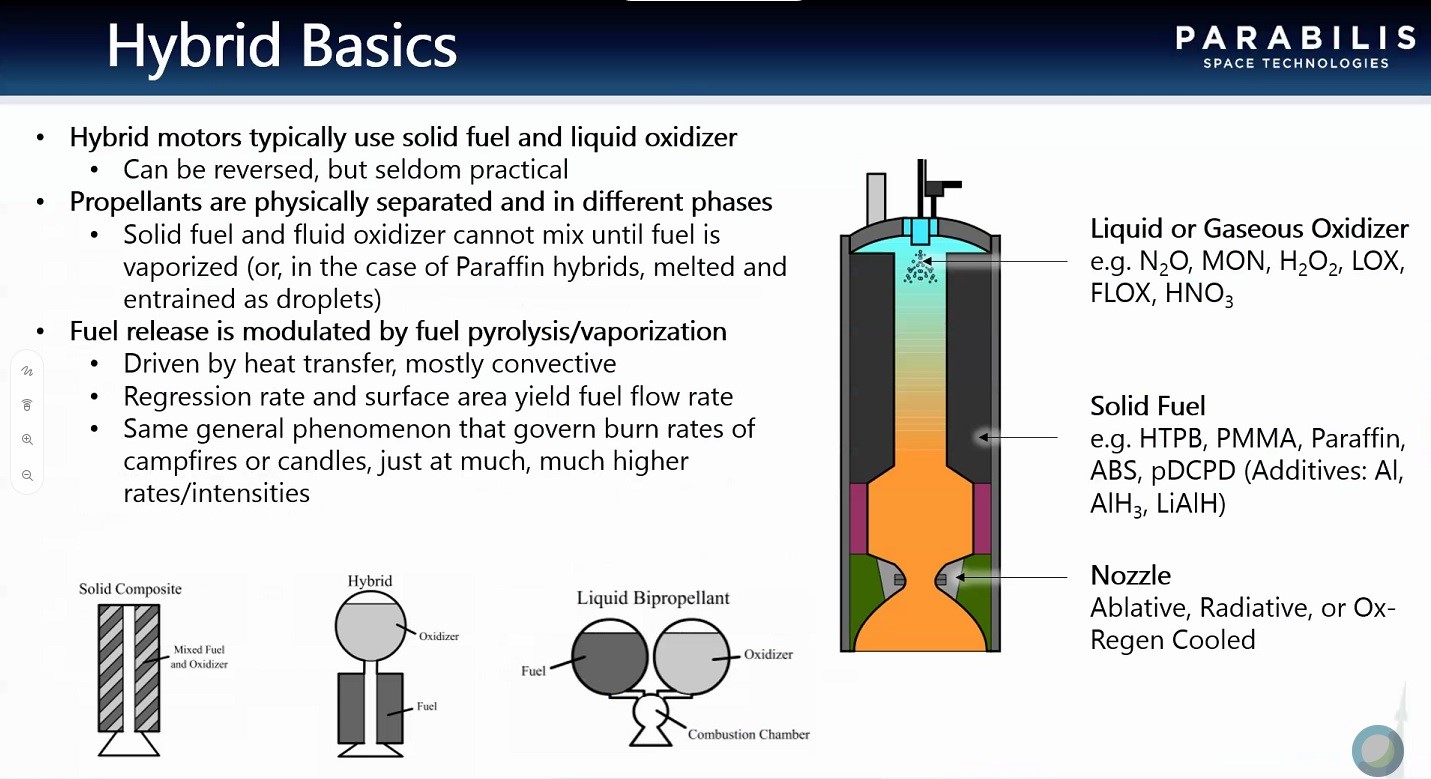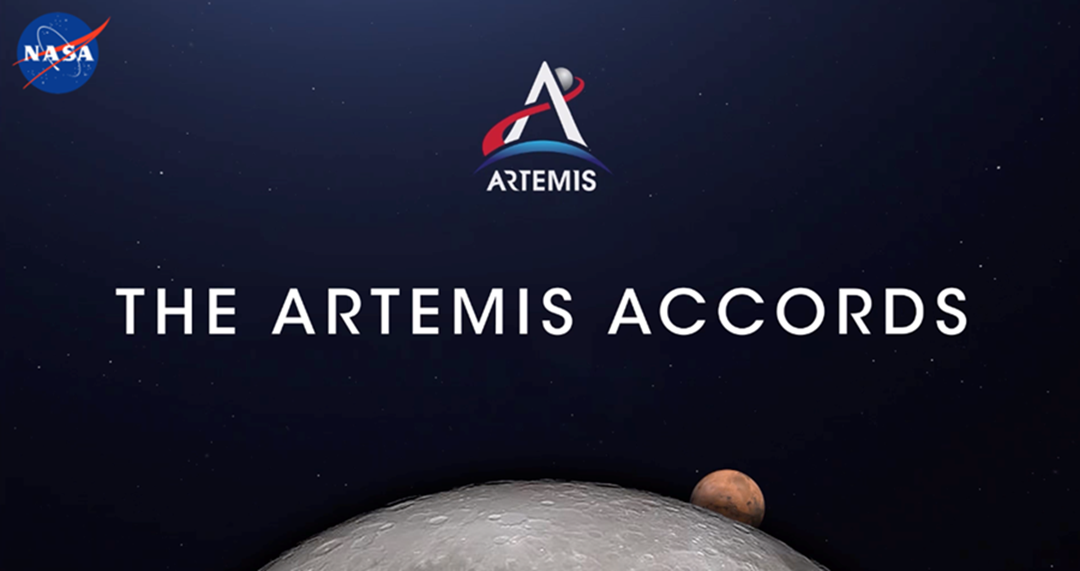In This Week’s Star
- NASA Takes Steps to Resume SLS Green Run Testing at Stennis
- Michoud Transitions to Stage 3 of NASA Response Framework
- Marshall Virtual Town Hall: Return to On-site Work Transition Planning
- Greg Chavers Named Deputy Manager of Human Landing System
- David Burns to Take Interim Science Leadership Role at NASA Headquarters
- Take 5 with Robert Champion
- Robert Polsgrove: Commercial Crew to Human Landers
- Chris Cianciola Participates in Artemis Week for NASA at Home: Spaceport Series
- Parabilis Space Technologies’ Principal Engineer Discusses Hybrid Propulsion at Tech Talk
- NASA at Home: Touch Down with NASA’s Human Landing System
- NASA Announces Artemis Accords for International Cooperation in Space Exploration
- This Week in NASA History: STS-77 Launches – May 19, 1996
NASA Takes Steps to Resume SLS Green Run Testing at Stennis
NASA has taken preliminary steps to resume Green Run testing activities on the first flight stage of its Space Launch System rocket. A limited number of crews returned to work at the agency’s Stennis Space Center on May 14.
“This is an important step toward resuming the critical work to support NASA’s Artemis program that will land the first woman and the next man on the south pole of the Moon by 2024,” Stennis Director Rick Gilbrech said. “Though Stennis remains in Stage 4 of NASA’s Response Framework, we assessed state and local conditions and worked with agency leadership to develop a plan to safely and methodically increase critical on-site work toward the launch of the next great era of space exploration.”
Stennis moved to Stage 4 on March 20, with only personnel needed to perform mission-essential activities related to the safety and security of the center allowed on site.
Green Run represents the first top-to-bottom integrated test of all flight core stage systems prior to its maiden Artemis I flight. All testing will be conducted on the B-2 Test Stand at Stennis in the coming months.
“The test facility has been in standby mode, so we allotted two days to reestablish some facility support of mechanical and electrical systems that will also assist the vehicle contractors in performing their operations,” said Barry Robinson, project manager for the B-2 Test Stand SLS core stage Green Run testing.
Reestablishing, or “waking up,” the B-2 Test Stand systems includes restoring facility power and controls, as well as ensuring pressurized gas systems are at proper levels for SLS operators to proceed with testing activities.
NASA is closely following Centers for Disease Control and Prevention guidance to safely operate and protect the health and welfare of all employees. Returning workers were trained in general safety procedures, personal protective equipment requirements and self-monitoring. Stennis site personnel also installed signs and markings to indicate where employees should stand and sit during upcoming activities.
Stennis plans for 30 days of limited crew activity on-site in anticipation of the center’s transition from Stage 4 to Stage 3. Once that transition occurs, increases to on-site work will continue slowly and methodically. The focus then will shift to preparing for the avionics power-up test, the next in a series of core stage Green Run testing milestones.
Green Run culminates with an eight-minute, full-duration hot fire of the SLS core stage with its four RS-25 engines.
Michoud Transitions to Stage 3 of NASA Response Framework
NASA’s Michoud Assembly Facility transitioned to Stage 3 of NASA’s Framework for Return to On-site Work on May 18.
After careful evaluation of agency guidance; updated federal, state and local guidelines; and conditions in the community, leadership determined that Michoud has met the conditions to safely transition.
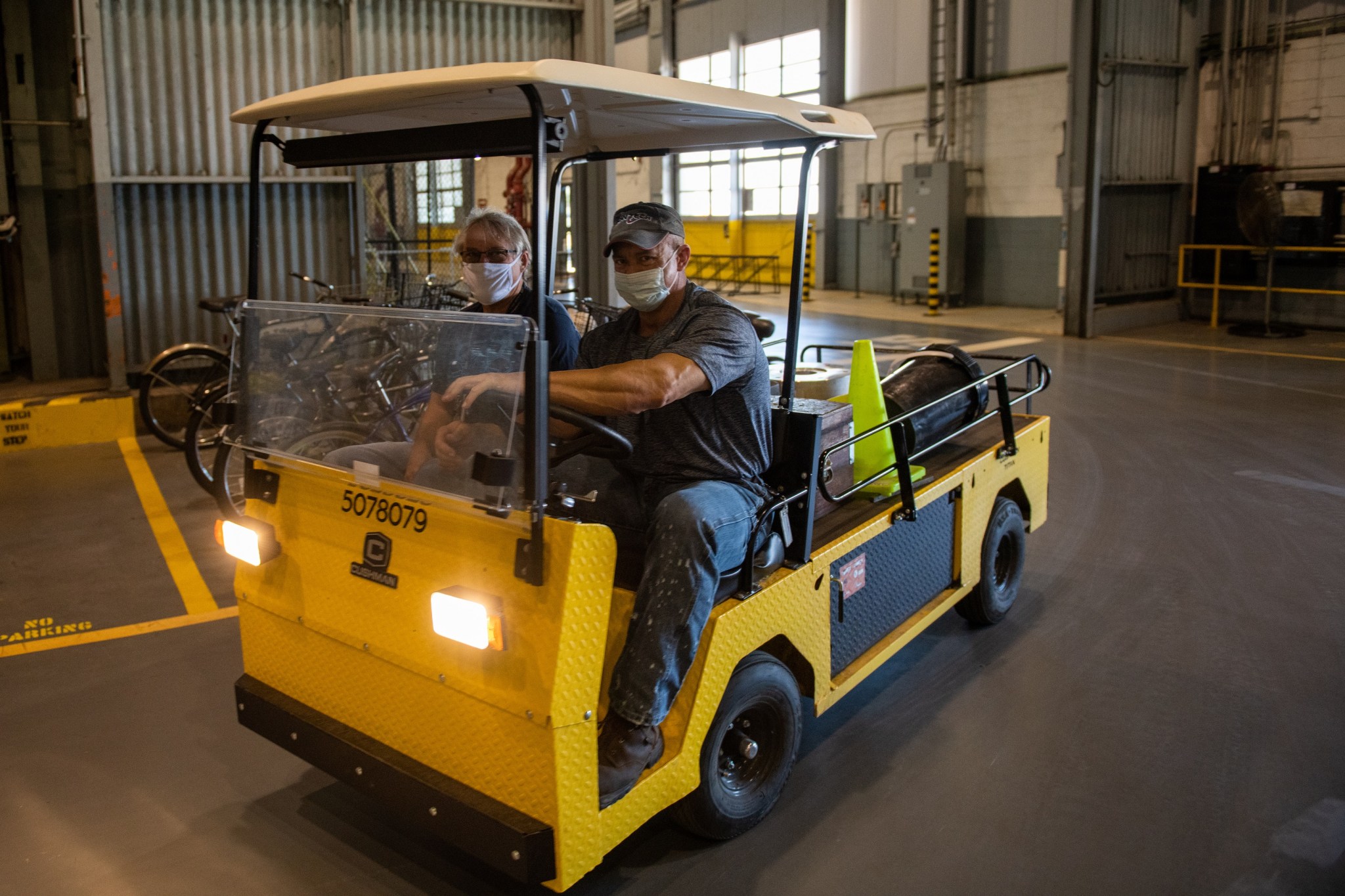
“The health and safety of our Michoud family remains our top priority as we navigate these challenging times,” Michoud Director Robert Champion said in a message to facility employees.
Specific factors included in the evaluation were the rescission of state and city stay-at-home orders and a decrease in COVID-19 and influenza-like illnesses in the greater New Orleans area over a 14-day period.
All employees who are able to telework should continue to do so. Access to the center is limited to authorized personnel working on mission-critical tasks that must be conducted on-site.
According to Champion, Michoud will slowly and methodically resume Space Launch System core stage and Orion spacecraft production activities — particularly deliverables on the critical path to support the Artemis program. This will be executed at a pace that limits personnel and follows federal guidelines for social distancing and use of personal protective equipment. The facility has been cleaned and sanitized — especially in common areas — and hand sanitizer stations have been installed at the entrances to all buildings.
“To prevent the spread of COVID-19, it is everyone’s responsibility and there are some simple things that we all can do to keep one another safe,” Champion said.
Face masks are required in all high-traffic and common areas, including entrances, break rooms, the cafeteria, Coast Guard Exchange and all areas occupied by Boeing. Employees are encouraged to continue washing their hands, clean work stations routinely, follow the return-to-site protocol posted on MAFSpace and stay home if they are sick.
Employees should continue to read all communications from supervisors, the agency and the facility — and regularly visit NASA People and MAFSpace for the latest information.
“You are all a vital part of NASA’s mission and I thank you for your dedication, patience and support as we work through this difficult time,” Champion said. “Please continue to take care of yourself and your families. Your health, and that of those around you, are of the utmost importance.”
Marshall Virtual Town Hall: Return to On-site Work Transition Planning
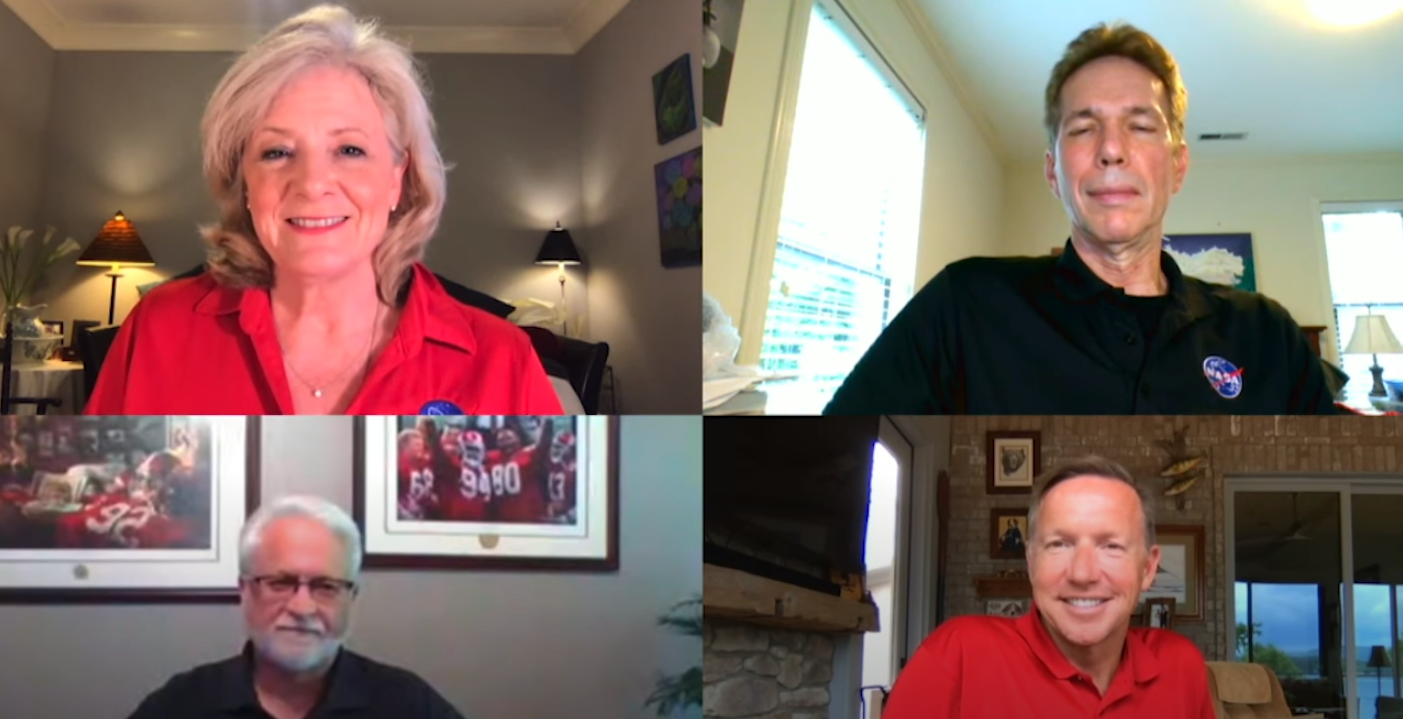
Return to on-site work planning is the theme of NASA’s Marshall Space Flight Center’s third COVID-19 virtual town hall. Clockwise from top left, Marshall Director Jody Singer, Deputy Director Paul McConnaughey, Occupational Health Officer David Thaxton and Associate Director Steve Miley, discuss the center’s transition plan to resume authorized mission-critical on-site work and the enhanced COVID-19 health and safety protocols expected. To view the town hall and for more information on the Safe at Work protocol, visit Inside Marshall. (NASA)
Greg Chavers Named Deputy Manager of Human Landing System
Greg Chavers has been appointed to the Senior Executive Service position of deputy manager of the Human Landing System Program Office at NASA’s Marshall Space Flight Center.
The Senior Executive Service is the personnel system covering most of the top managerial positions in federal agencies.
Chavers will assist Lisa Watson-Morgan, manager of the Human Landing System Program, in leading the rapid development of an integrated human lunar landing system — including a descent element, ascent element and transfer vehicle for the Artemis program, which will deliver the first woman and next man to the lunar surface by 2024. Chavers will work directly with U.S. industry partners, administer and monitor expenditures of the fiscal year 2020 budget, lead a team of approximately 425 employees at multiple NASA centers and act as the chair of the agency’s Human Landing System Control Board.
Chavers has 29 years of experience in project management and development of lunar landing systems. He joined Marshall in 1991 as an aerospace engineer in the Systems Analysis and Integration Laboratory. Other past roles include acting chief of the Planning, Operations and Analysis Branch; lead systems engineer for the Spacecraft and Lander System; project engineer for the Robotic Lunar Lander Development Project; manager of the Resource Prospector Lunar Lander Project; and manager of the Advanced Exploration Systems’ Lander Technologies Project. Since February 2018, he has been formulation manager of the Human Exploration & Operations Mission Directorate’s Advanced Cislunar and Surface Capability. Chavers has been the acting deputy manager of the Human Landing System Program Office since September 2019.
Chavers earned a bachelor’s degree in aerospace engineering from Auburn University in 1990. He earned a master’s degree and doctorate in physics — both from the University of Alabama in Huntsville — in 1998 and 2003, respectively. A native of Flomaton, Alabama, he and his wife, Denise, reside in Priceville, Alabama, with their son, Dustin, and daughters Marissa and Maleiha.
David Burns to Take Interim Science Leadership Role at NASA Headquarters
David Burns, manager of the Science & Technology Office at NASA’s Marshall Space Flight Center, has been appointed to an eight-month, interim position as NASA acting assistant deputy associate administrator for Exploration at NASA Headquarters.
In his new role, effective May 24, Burns will be the agency’s interface between NASA mission directorates, the scientific community and commercial, academic and global stakeholders — overseeing an integrated approach to human and robotic exploration initiatives.
Burns became manager of Marshall’s Science & Technology Office in January 2017. During his temporary absence from Marshall, Rae Ann Meyer, currently deputy manager of the office, will become its acting manager. William Hill, currently the office’s director for advanced technology, will be acting deputy manager.
Take 5 with Robert Champion
Inspired and challenged by his high school physics teacher to do more, to be more, Robert Champion has built a career at NASA that he loves as he continues to learn as much as possible. He’s taken that knowledge, traveled various paths along the way and is now director of NASA’s Michoud Assembly Facility – a job he took so that he could make a difference.
Named to the position in June 2019, Champion oversees one of the world’s largest manufacturing facilities, where important elements of NASA’s Space Launch System and Orion spacecraft are being built. He manages an annual operating budget of $60 million, more than 2 million square feet of manufacturing space on 829 acres at the multi-tenant facility. More than 3,500 federal, state, academic and technology-based industry employees work at Michoud.
Champion recently sat down with Michoud communications specialist Erin St. Pierre to discuss leading a complex operation and the facility’s vital role in NASA’s Artemis program.
Question: You work with leadership and teams at Marshall, your team at Michoud and tenants at Michoud. How do you manage working with so many different teams?
Champion: I find myself doing a lot of listening. Then I get to communicate what I hear to various people: to leadership, the Michoud team members and our partners. Being in touch with leadership from Marshall and NASA Headquarters means I have information on goals and objectives that I can share with our team members here at Michoud. I consider myself a resource and motivator. I set the direction for the team to achieve the goals that leadership has set for us. And then, if there are issues, I help remove roadblocks.
Then, I use our team to the best of their abilities. I delegate and try to empower the teams here at Michoud to do their jobs. We have team members who are dedicated to each of our partners and in particular with our prime contractors working on the SLS rocket. I meet with them weekly or more to discuss items I can help with or I need to address with leadership.
Listening allows me to share information from the top to the bottom and from the bottom to the top. It has to flow both ways.
Question: What is the team environment like at Michoud and how do you encourage collaboration and integration?
Champion: We couldn’t function without our teams at all levels. Michoud touches many parts of the Space Launch System — Boeing with the core stage, exploration upper stage and engines; Lockheed Martin with the launch abort system and Orion; and Northrop Grumman is working on advanced boosters. To ensure we are all working together, I have encouraged cross-communications between NASA and all of our partners by pairing NASA team members directly with our partner teams. Having NASA work so closely with our partners means we are always on the same page and able to work through any item that comes up during the day.
Question: Artemis has a lot of moving parts and a huge team. What partnerships are your team pursuing to help the agency and the nation put the first woman and next man on the Moon by 2024?
Champion: The primary mission of Michoud is to build rockets for NASA, and in support of that mission we have to maintain the facility. We are pursuing partnerships with our NASA counterparts and with our on-site tenants.
Because the Michoud team works so closely on various pieces of the rocket that go to other locations for testing and eventually launch, we developed close working relationships with Marshall, Stennis Space Center, Kennedy Space Center and other NASA centers. For example, the ground systems engineers travel to various centers to deliver Artemis equipment and pieces using our Pegasus barge.
Question: How do you define and achieve mission success?
Champion: Boots on the Moon in 2024 will be success. But along the way we will have several key milestones that will show success. Seeing the core stage for Artemis I roll from the factory to Pegasus and then leaving for Stennis earlier this year was a huge success. Another success will be when we see the core stage for Artemis II in final assembly.
A big part of that success is delivering on our commitments, like maintaining a modern manufacturing facility. We do that by supporting all of our partners.
Question: What inspires your drive to succeed?
Champion: First, my high school physics teacher Ms. Emma Hicks. She was the first person to ever really push me regarding science and math. She told me I could be smarter than her one day. I had never considered that. It surprised me and inspired me to pursue greater things in my life.
I also have to give credit to all of my previous leaders. Throughout my time at NASA, I have always been encouraged to question and think and push. None of them ever stopped me from learning or reaching out to be part of other areas. It’s been an incredible journey and I am excited about the future. My hope is that I am that kind of leader and pass it on.
Previous Take 5s
Bill Marks, deputy director of Marshall’s Office of Center Operations
Katherine Van Hooser, Marshall’s chief engineer
Bobby Watkins, manager of the Human Exploration Development & Operations Office at Marshall
Neil Rodgers, director of the Office of the Chief Information Officer at Marshall
Lisa Watson-Morgan, manager of NASA’s Human Landing System Program
Mary Beth Koelbl, deputy director of Marshall’s Engineering Directorate
Robert Polsgrove: Commercial Crew to Human Landers
Editor’s note: The SpaceX Demo-2 mission will launch at 3:33 p.m. on May 27 from Kennedy Space Center. NASA TV coverage will begin at 11 a.m. Prelaunch and launch activities will also be streamed via NASA TV online, YouTube, Twitter, Facebook and LinkedIn. Coverage will include the Dragon crew capsule’s separation from the Falcon 9 rocket, and NASA astronauts Bob Behnken and Doug Hurley entering the International Space Station. The complete streaming schedule can be found here. The Commercial Crew Program blog will provide countdown coverage and updates.
By Taylor Goodwin
As NASA prepares to land astronauts on the Moon for the first time in the 21st century, engineer Robert Polsgrove is helping commercial companies take the next giant leap to make that possible.
As Human Landing System technical manager at NASA’s Marshall Space Flight Center, Polsgrove will help one of the companies recently selected by NASA to design what may be the first commercially built spacecraft to land humans on the Moon for NASA’s Artemis program.
Polsgrove launched his career into the era of commercial partnerships in 2011 when he began working for the newly established Commercial Crew Program. He worked closely with private companies Boeing and SpaceX to develop crew transportation systems that can safely, reliably and cost-effectively carry humans to low-Earth orbit and the International Space Station.
“Within Commercial Crew, I was responsible for all products demonstrating crew certification and safety for launch vehicle propulsion,” he said. “This included SpaceX’s Falcon 9 rocket and United Launch Alliance’s Atlas V rocket. When it came to propulsion, I got to touch everything — liquid engines, solid boosters, thrust vector control systems and stage propulsion. As the Commercial Crew launch vehicle propulsion system lead, I was responsible for advising nine subsystems between the two rockets.”
In his new role, Polsgrove will act as the “contractor’s advocate” between NASA and a Human Landing System prime contractor, Dynetics of Huntsville. Similar to the partnerships NASA pursues in the Commercial Crew Program, the Human Landing System program recently entered contractual relationships with three U.S. companies to advance the Artemis missions. Working closely with Blue Origin of Kent, Washington, Dynetics and SpaceX of Hawthorne, California, NASA will guide each company in the development of human landers — one of which will deliver the first woman and next man to the Moon by 2024.
While this will be a new challenge for Polsgrove, he is familiar with the details required to achieve mission success. Throughout his NASA career, he has accumulated experience in engine systems, main propulsion systems, commercial partnership proposals and team leadership.
As launch vehicle propulsion lead for Commercial Crew, he was responsible for understanding the design and manufacturing of engines that power the Atlas V rocket,
which Boeing selected as the launch vehicle for its CST-100 Starliner spacecraft, and SpaceX’s Falcon 9, which launches its Crew Dragon for NASA astronaut missions to the space station. Polsgrove pulled together a team with members from NASA and a variety of companies and government agencies to collaborate and share their aerospace expertise.
“In 2014, I was told that we have to put our crew on rockets not originally designed for human spaceflight,” he recalled. “In 2018, I went to a board meeting and said, ‘We have concluded these systems are safe for crewed spaceflight,’ and everyone agreed. I still get chills telling the story.”
Facing challenges like this, Polsgrove said, helped him to get into a new business mindset where he is working with private companies while offering NASA’s insight and expertise. Polsgrove’s broad experience interacting with multiple NASA centers and industry in this capacity has prepared him to foster the relationships to grow the Human Landing System program.
“I will essentially be a caretaker of the relationship between Dynetics and NASA,” Polsgrove said. “I will advocate in the best interest of both parties to ensure that we maintain our schedule and our communication. I will ensure Dynetics has access to the resources and the insight they need to help us get back to the Moon.”
While Polsgrove joins the human landing team at a crucial time, he is still looking forward to watching the Commercial Crew Program reach its upcoming milestones. On NASA’s SpaceX Demo-2 mission, American astronauts will launch on an American rocket from American soil to the International Space Station for the first time since 2011. NASA astronauts will fly on SpaceX’s Crew Dragon spacecraft, lifting off on a Falcon 9 rocket from Launch Complex 39A at NASA’s Kennedy Space Center, for an extended stay at the space station as part of the Expedition 63 crew.
Polsgrove joined NASA’s team shortly after earning his bachelor’s degree in aerospace engineering from the University of Cincinnati in 1999. In 2007, he graduated with a master’s degree in mechanical engineering from the University of Alabama Huntsville.
“The relationships that I’ve made within NASA and the aerospace industry at large have pushed me to do things I never thought I would accomplish,” he said. “I had the right people challenging me and helping me succeed. It takes trust in others and respect for their talents to reach a common goal, and that’s exactly what we’re striving to do here.”
Goodwin, an ASRC Federal/Analytical Services employee, supports the Office of Strategic Analysis & Communications.
Chris Cianciola Participates in Artemis Week for NASA at Home: Spaceport Series
Chris Cianciola, NASA’s Space Launch System Program deputy manager at NASA’s Marshall Space Flight Center, participates in the 14th episode of the #NASAatHome: Spaceport Series on May 12. The series is a live YouTube series from NASA’s Kennedy Space Center. Cianciola was one of five subject matter experts interviewed during the week of May 11 to highlight the agency’s Artemis lunar program. In this episode, Cianciola provides an overview of the deep space rocket as well as a manufacturing and testing update for Artemis I, the first integrated mission of SLS and NASA’s Orion spacecraft. Regularly scheduled episodes typically air twice weekly at noon. To learn more about the SLS rocket, click here. (NASA)
Parabilis Space Technologies’ Principal Engineer Discusses Hybrid Propulsion at Tech Talk

Shannon Eilers, principal engineer at Parabilis Space Technologies in San Marcos, California, gave a virtual Tech Talk on hybrid propulsion for in-space applications May 14.
Hybrid propulsion technologies use key aspects of traditional liquid propulsion systems – such as the RS-25 engines on NASA’s Space Launch System rocket – and solid propulsion systems – including the solid rocket boosters on SLS. Parabilis, which focuses on propulsion development of both hybrid and liquid propulsion systems for government and nongovernment customers, was co-founded by Eilers in 2014.
The next Tech Talk, to be held virtually on June 11, will feature Lee Mason from NASA’s Glenn Research Center, who will discuss his work on Kilopower. The Tech Talk series is presented by the Marshall Center Chief Technologist’s Office.
NASA at Home: Touch Down with NASA’s Human Landing System
Students and families can follow along and create their own human landing system at home at: https://www.nasa.gov/stem-ed-resources/otm-touchdown.html Credits: NASA
NASA is working with American companies to build a modern human landing system that will take astronauts to the surface of the Moon. In this #NASAatHome video, Erika Alvarez, an aerospace engineer with the Human Landing System program at NASA’s Marshall Space Flight Center, explains the purpose of a human landing system and the challenges of touching down on the Moon. Students and families can follow along and create their own human landing system at home by visiting here.
NASA Announces Artemis Accords for International Cooperation in Space Exploration
On May 15, NASA announced the Artemis Accords — which establish a common vision via a practical set of principles, rules and best practices to govern cooperative space exploration among nations.
“It’s a new dawn for space exploration,” NASA Administrator Jim Bridenstine said. “Today I’m honored to announce the Artemis Accords agreements — establishing a shared vision and set of principles for all international partners that join in humanity’s return to the Moon. We go, together.”
The accords are intended to apply to all future space exploration activities undertaken by the participant nations. American leadership will drive an open, sustainable and agile architecture with international and commercial partners to get astronauts back on the lunar surface as quickly as possible.
International space agencies that join NASA in the Artemis program will do so by executing bilateral Artemis Accords agreements — which will describe a shared vision for principles, grounded in the Outer Space Treaty of 1967, to create a safe and transparent environment that facilitates exploration, science and commercial activities for all of humanity to enjoy.
Artemis Accords partner nations will be required to publicly describe their own policies and plans in a transparent manner.
To ensure interoperability of systems for safe and robust space exploration, the Artemis Accords call for partner nations to utilize open international standards, develop new standards when necessary and strive to support interoperability to the greatest extent practical. NASA and partner nations will provide public information regarding the location and general nature of operations, which will inform the scale and scope of “safety zones.” Notification and coordination between partner nations to respect such safety zones will prevent harmful interference.
Under the accords, NASA and partner nations commit to taking all reasonable steps possible to render assistance to astronauts in distress, a reaffirmation of commitment to the United Nations’ Agreement on the Rescue of Astronauts, the Return of Astronauts and the Return of Objects Launched into Outer Space.
The accords reinforce the critical nature of registration and urge any partner that isn’t already a member of the Registration Convention to join as soon as possible. This effort aims to promote coordination between nations to avoid harmful interference between space programs.
Partners will agree to follow NASA’s example in the open sharing of data — releasing their scientific data publicly to ensure that the entire world can benefit from the Artemis journey of exploration and discovery. Under the agreements, NASA and partner nations will commit to the protection of sites and artifacts with historic value.
The Artemis Accords reinforce that space resource extraction and utilization can and will be conducted under the Outer Space Treaty — supporting safe and sustainable exploration by enabling extraction and utilization of resources on the Moon, Mars and asteroids.
Preserving a safe and sustainable environment in space is critical for both public and private activities. NASA and partner nations will agree to act in a manner that is consistent with the principles reflected in the Space Debris Mitigation Guidelines of the United Nations Committee on the Peaceful Uses of Outer Space. NASA and partner nations will also agree to plan for the mitigation of orbital debris — including the safe, timely and efficient passivation and disposal of spacecraft at the end of their missions.
Learn more about the Artemis Accords here.
This Week in NASA History: STS-77 Launches – May 19, 1996
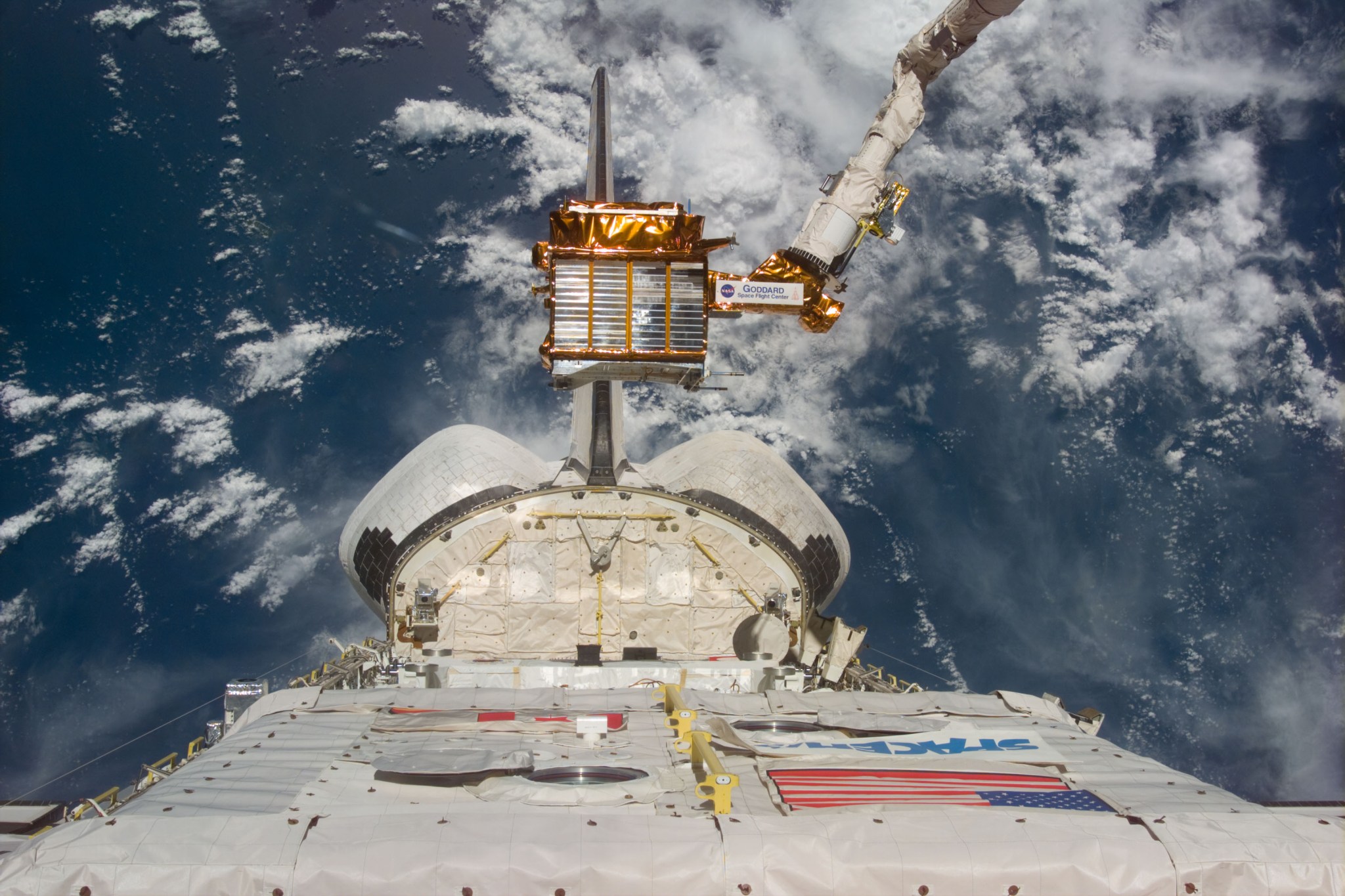
This week in 1996, space shuttle Endeavour, mission STS-77, launched from NASA’s Kennedy Space Center. Endeavour carried three primary payloads: the SPACEHAB-4 pressurized research module, the Inflatable Antenna Experiment mounted on the Spartan 207 free-flyer and a suite of four technology demonstration experiments known as Technology Experiments for Advancing Missions in Space. Here, the Spartan 207 free-flyer is held in a low-hover mode above its berth in the shuttle’s cargo bay in the grasp of the Remote Manipulator System. The free-flyer was recaptured by Endeavour’s crew on May 21, 1996. The NASA History Program is responsible for generating, disseminating and preserving NASA’s remarkable history and providing a comprehensive understanding of the institutional, cultural, social, political, economic, technological and scientific aspects of NASA’s activities in aeronautics and space. For more pictures like this one and to connect to NASA’s history, visit the Marshall History Program’s webpage. (NASA)







